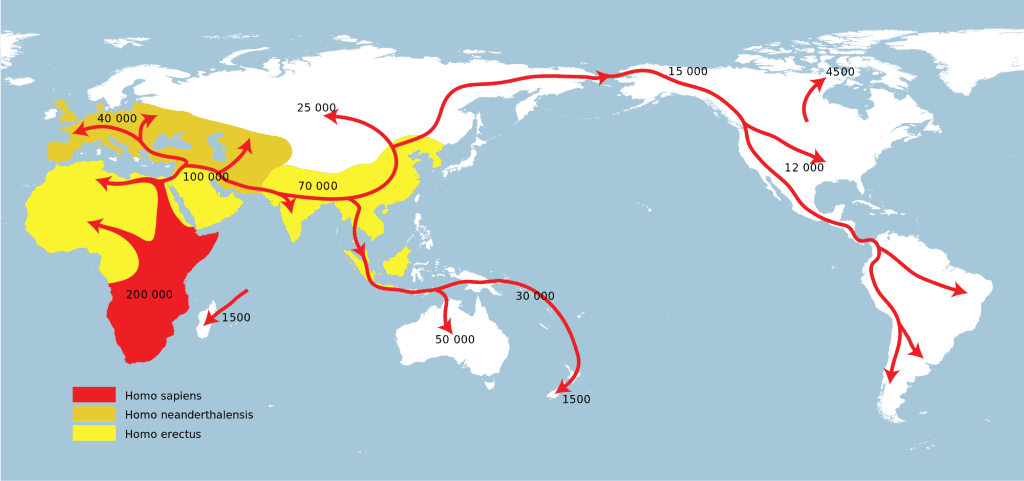How did people get to America, and when? A new, ‘pioneering and neat’ study may have some answers.

If we want to understand human migration, it’s all about the timings. For example, if you’d ask anthropologists how the earliest people got to the Americas, they’ll likely tell you they crossed a small land bridge between Siberia and Alaska. This would mean that they crossed it towards the end of the glacial age, but before all the ice melted and submerged the bridge. This puts a fairly good time frame on the event and it’s what most scientists believed.
But recently, that belief is starting to be challenged. There is mounting evidence that the presumed ice-free corridor on which settlers arrived wasn’t walkable until much later, when the first humans had already reached the Americas. We know that those glaciers started melting 14,000–15,000 years ago, during the time of the Clovis Culture. The Clovis people were the ones to pass through the land bridge which is now underwater, settling in the lower 48 states some 13,000 years ago. But the time doesn’t fit, because there is evidence of human activity in the Americas from 15,000 years ago. This means that someone got there before the Clovis did.

A new study adds a lot of weight to that idea. The research analyzed the DNA of pollen, plants, and animals collected from lake sediments around the presumed land bridge, finding that the date in which it was passable was 12,600 years ago. This is millennia after the first people got to North America.
“This is a really neat and pioneering study,” says Stephen Jackson, a paleoecologist with the U.S. Geological Survey’s Southwest Climate Science Center in Tucson, Arizona, who was not involved in the work. Because this is the first study to take into account both so-called environmental DNA (eDNA) as well as more traditional types of data, he says, “we stand to learn a good deal more about how to interpret our records.” Because DNA has an electric charge, it can bind to some sediments and preserve itself for a longer time in calm lake sediments.
The DNA of a migration
The core samples they took paint a very clear picture of an environmental transition: from icy wasteland to fertile forest to the underwater environment we see today. For the first 700 years after the ice started retreating, there were almost no plant or animal remains. Then, they found evidence of animals such as woolly mammoth, bison, and jackrabbits. By about 12,400 years ago, forests of Populus trees (related to poplar trees) started to dominate, and the area was likely a fertile forest. Then, about 11,600 years ago, it changed again, becoming a boreal forest of spruce and pine trees.

However, settlers had already reached America by then, and Jackson believes they took the coastal route. Using the numerous islands in the area as pit stops.
“The idea is that there was a land bridge a few thousand years earlier than the formation of the ice-free corridor,” he says. “That land is now covered by ocean, but there are some islands believed to be part of that route. It would be interesting to go and look for cores and try to do the same exercise there.”
It’s not the first study to suggest this. Previously, another recent study of mitochondrial DNA in northern and southern populations of bison separated by the corridor puts the walkable date at 13,000 years ago – which might be enough for the Clovis people.
“It’s a pretty subtle difference,” says Duane Froese, a geoscientist from the University of Alberta, Edmonton, in Canada, and a co-author of that study.
However, that difference could be very significant, and not everyone is convinced. This type of paleoecology DNA study is still in its infancy, but it is a very intriguing starting point.
Journal Reference: Postglacial viability and colonization in North America’s ice-free corridor. Nature (2016) doi:10.1038/nature19085






